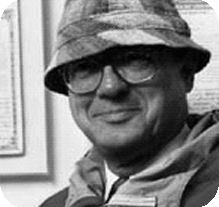
A.M. TURING AWARD WINNERS BY...
Charles William Bachman

United States – 1973
Short Annotated Bibliography
Bachman spent his career in industry rather than academia, most of it managing product development and service delivery rather than working in a research lab. Most of his writings are unpublished reports and memos, archived as Charles W. Bachman Papers (CBI 125), Charles Babbage Institute, University of Minnesota, Minneapolis, available here. The list below is restricted to published documents.
- Bachman, C. W., “The Programmer as Navigator,” Communications of the ACM, Vol. 16, Num. 11, November 1973, pp. 653-658.This, Bachman’s Turing Award lecture, was a highly influential summary of the new importance of data base management systems for administrative computing work, implications for the work of the programmer, and the centrality of navigation to the network data model.
- Bachman, C. W., “The Origin of the Integrated Data Store (IDS): The First Direct-Access DBMS,” IEEE Annals of the History of Computing, Vol. 31, Num. 4, Oct-Dec 2009, pp. 42-54.This is Bachman’s own account of the creation of the first data base management system.
- Bachman, C. W., "Data Structure Diagrams," Data Base, vol. 1, no. 2, Summer 1969, pp. 4-10. Bachman had been using data structure diagramming techniques since the early 1960s. The version presented here has a clear resemblance to the methods used today.
- Bachman, C. W., “A Personal Chronicle: Creating Better Information Systems, with Some Guiding Principles,” IEEE Transactions on Knowledge and Data Engineering, Vol. 1, Num. 1, March 1989, pp. 17-32. In this memoir Bachman explores accomplishments from several stages of his career and draws lessons from them.
- Haigh, T., “Charles W. Bachman: Database Software Pioneer,” IEEE Annals of the History of Computing, Vol. 33, Num. 4, Oct-Dec 2011, pp. 70-80. This article explores Bachman’s career in more detail.
- Haigh, T., “How Data Got its Base: Generalized Information Storage Software in the 1950s and 60s,” IEEE Annals of the History of Computing, Vol. 31, No. 4, Oct-Dec 2009, pp. 6-25. This article puts Bachman’s work on IDS into the broader context of early information storage software, including his own contributions to projects of the SHARE user group in the late 1950s and the role of the CODASYL Data Base Task Group in defining the concept of a data base management system.
- Bachman, C. W., Oral History Interview by Thomas Haigh, 25-26 September 2004, Tucson, AZ,” ACM Oral History Interviews collection. ACM Digital Library, available here. This is the transcript of lengthy and comprehensive interview conducted over several days covering Bachman’s entire career. It is the source of both quotes used in the essay.




























 THE A.M. TURING AWARD
THE A.M. TURING AWARD